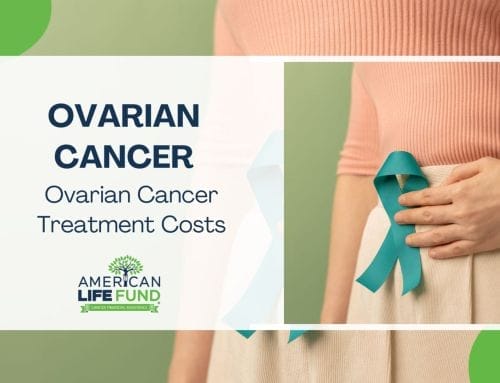Cervical cancer is a health concern affecting women globally. According to the National Cancer Institute, in 2023, it is estimated that there were 13,960 new cases of cervical cancer. These statistics underscore the urgent need for effective prevention, diagnosis, and treatment strategies to combat this disease.
For many cervical cancer patients, the diagnosis brings physical challenges and financial burdens. The economic impact of cervical cancer treatment costs can be overwhelming, often leading to stress and anxiety for patients and their families.
Cervical cancer treatment costs place a heavy strain on individuals and healthcare systems alike. Even for those with health insurance coverage, out-of-pocket expenses can quickly add up, leading to financial hardship and potentially affecting treatment decisions.
Despite the challenges of cervical cancer treatment costs, there are avenues for support. Financial assistance programs from government agencies and nonprofits, along with cost-effective treatments and preventive measures like cervical cancer screening and HPV vaccination, may help the economic burden.
We hope to support you by discussing the stages and types of treatments, insurance coverage, direct and indirect expenses, and various financial assistance avenues, including viatical settlements. Additionally, we will provide practical tips for managing the costs associated with cervical cancer treatment.

Key Takeaways
- Cervical cancer treatment can be a financial burden on patients and their families, with expenses ranging from surgeries and medications to doctor visits and tests.
- Various financial assistance options are available, including government programs, nonprofit organizations, advocacy groups, and clinical trials, to help alleviate the financial strain of cervical cancer treatment.
- Viatical settlements, such as those offered by American Life Fund, provide a valuable financial resource for cervical cancer patients. We offer quick access to funds without the need for repayment.
- Patients can manage cervical cancer treatment costs by understanding health insurance coverage, exploring financial assistance programs, discussing treatment costs with healthcare providers, and considering alternative treatment options.
- Nonprofit organizations and advocacy groups, such as the National Cervical Cancer Coalition and Cervivor, offer support services, educational resources, and financial assistance programs tailored to the needs of cervical cancer patients.
Understanding the Cost of Cervical Cancer Treatment
Cervical cancer treatment costs are a financial burden on patients and their families. According to a study conducted by the CDC, annual treatment costs for the initial phase of care in cervical cancer patients were estimated to be approximately $58,700 per patient.
These costs include:
- Direct medical expenses such as hospitalization
- Surgery
- Radiation therapy
- Chemotherapy
- Medications
- Doctor visits and tests
- Indirect costs like lost productivity and transportation expenses
Consequently, understanding the costs tied to cervical cancer treatment and available financial resources is extremely important for patients.
Stages of Cervical Cancer and Their Impact on Costs
The stages of cervical cancer are important when determining both the type of treatment required and the associated costs. Cervical cancer is typically categorized into several stages, ranging from early-stage to advanced-stage disease. The American Cancer Society outlines the following stages:
- Stage 0 (carcinoma in situ): At this stage, abnormal cells are found only in the inner lining of the cervix. Treatment options may include surgery or localized treatments such as cryotherapy or laser therapy.
- Stages I and II: In these stages, the cancer has spread beyond the cervix but remains localized to the pelvic area. Treatment often involves a combination of surgery, radiation therapy, and chemotherapy.
- Stage III: At this stage, the cancer has spread to the lower part of the vagina or the pelvic wall. Treatment may involve more extensive surgery, radiation therapy, and chemotherapy.
- Stage IV: This is the most advanced stage of cervical cancer, where the cancer has spread to nearby organs or distant parts of the body, such as the lungs or liver. Treatment options may include surgery, radiation therapy, chemotherapy, and targeted therapy.
The stage of cervical cancer impacts treatment costs, with advanced stages often requiring more intensive and costly interventions. The progression of the disease may require ongoing medical care and supportive therapies, further adding to the financial burden.
Types of Treatments and Their Costs
Understanding the types of treatments available for cervical cancer and their associated costs is necessary for patients and their families. Here, we outline common treatments along with estimated costs:
Surgery:
- Cryotherapy or Laser Therapy: These minimally invasive procedures for early-stage cervical cancer typically range from $1,000 to $3,000 per session.
- Conization (Cone Biopsy): This surgical procedure to remove abnormal cervical tissue may cost between $3,000 and $6,000.
- Hysterectomy: Surgical removal of the uterus, cervix, and possibly other nearby structures, with costs ranging from $10,000 to $20,000 or more, depending on the type of hysterectomy and hospital fees.
Radiation Therapy:
- External Beam Radiation: This non-invasive treatment option for localized cervical cancer may cost between $10,000 and $50,000, depending on the duration and frequency of sessions.
- Brachytherapy: Internal radiation therapy involving the placement of radioactive sources directly into or near the tumor site, with costs ranging from $5,000 to $30,000 per treatment session.
Chemotherapy:
- Systemic Chemotherapy involves Administering chemotherapy drugs via infusion or oral medications. The costs vary widely depending on the specific drugs used, treatment duration, and side effects. The average cost ranges from $3,000 to $10,000 monthly or more.
Immunotherapy:
- Checkpoint Inhibitors: These newer immunotherapy drugs may cost between $10,000 and $15,000 per month, depending on the specific medication and treatment regimen.
Targeted Therapy:
- Angiogenesis Inhibitors are drugs that target blood vessel formation in tumors. Treatment costs range from $8,000 to $12,000 per month.
Supportive Care:
- Palliative Care: Comprehensive supportive care aimed at improving quality of life and managing symptoms, with costs varying depending on the extent of services needed and insurance coverage.
It’s important to note that these are estimates and vary widely based on factors such as geographic location, healthcare provider fees, insurance coverage, and individual patient needs.
Additional expenses such as hospitalization, follow-up appointments, and supportive therapies may contribute to the overall cost of treatment.
Insurance Coverage and Its Role in Treatment Costs
Understanding health care costs and insurance is necessary for managing cervical cancer treatment costs. Health insurance plans in the US vary in coverage levels, with some offering lower premiums but higher out-of-pocket costs.
In comparison, others have higher premiums but lower out-of-pocket expenses. Knowing your health insurance benefits will help control these treatment expenses.
Additionally, various financial assistance options are available to support cervical cancer patients. These include:
- Government programs
- Nonprofit organizations
- Advocacy groups
- Participation in clinical trials
Looking into these channels may provide valuable resources and support to alleviate the financial burden of cervical cancer treatment.
Direct and Indirect Expenses in Cervical Cancer Treatment
When examining the financial implications of a cervical cancer diagnosis, it’s important to consider both direct and indirect expenses. Direct expenses include:
- Medical costs associated with diagnosis
- Treatment
- Follow-up care
In contrast, indirect expenses include broader economic factors, such as:
- Lost wages
- Transportation
- Childcare or eldercare
- Home modifications
- Complementary therapies
- Emotional support
Direct Medical Costs:
Direct medical costs include treatments, medications, and hospital stays. These expenses can vary significantly based on factors such as the cancer stage and the specific treatment plan. For example, in 2020, cervical cancer care in the US reached $2.3 billion.
It’s important for patients to understand these costs and plan accordingly.
Indirect Expenses:
Indirect expenses for cervical cancer patients may include:
- Lost wages
- Transportation costs
- Childcare or eldercare
- Home modifications
- Complementary therapies
- Emotional support
The average cost of post-treatment care and ongoing treatments for cervical cancer patients varies depending on the cancer stage. These expenses accumulate rapidly, underscoring the importance for patients and their families to consider indirect costs when assessing the financial impact of a cervical cancer diagnosis.
Financial Assistance Options for Cervical Cancer Patients
Financial assistance options are available to support cervical cancer patients in managing the costs associated with their treatment. These resources help reduce the financial burden and ensure patients can access necessary care. Here are some key financial assistance options for cervical cancer patients:
Government Programs
Government programs, such as Medicaid and the CDC’s National Breast and Cervical Cancer Early Detection Program, provide low-income women with access to screening and treatment. Eligibility criteria for these programs may vary by state.
However, generally, individuals who meet the necessary age requirements and income limits in need of treatment for cervical cancer may be eligible. We advise checking with your state’s Medicaid program for precise eligibility guidelines.
Nonprofit Organizations and Advocacy Groups
Nonprofit organizations and advocacy groups are key in supporting cervical cancer patients by providing financial and emotional support throughout their journey.
The National Cervical Cancer Coalition (NCCC) offers educational resources, support groups, and financial aid programs specifically tailored to those affected by cervical cancer.
Cervivor provides a supportive community and empowerment programs for patients and survivors. Organizations like The Pink Fund, American Cancer Society (ACS), and CancerCare offer various support services, including financial assistance and counseling, to cervical cancer patients facing financial challenges.
These nonprofit organizations that help are valuable resources, offering assistance and solidarity to individuals battling a cervical cancer diagnosis and treatment.
Clinical Trials
Clinical trials are research studies that involve human participants and assess the safety and efficacy of new treatments. Participating in clinical trials for cervical cancer treatment may offer access to new treatments at reduced or no cost.
Eligibility criteria for cervical cancer clinical trials may vary, but some common criteria include:
- Age
- Stage and type of cervical cancer
- Previous treatments
- Overall health
- Specific genetic mutations
- Informed consent
Regularly conducted clinical trials investigate novel and more efficient methods to detect and treat cervical cancer, ultimately aiming to reduce the number of cervical cancer cases.
Tips for Managing Cervical Cancer Treatment Costs
Managing the costs associated with cervical cancer treatment can be challenging. However, strategies and resources are available to help with the financial burden. Here are some tips for managing cervical cancer treatment costs:
Communicating with Healthcare Providers
Clear communication with healthcare providers is key to managing cervical cancer treatment costs. Here are some strategies to consider:
- Seek accurate and transparent cost details.
- Tailor communication to your specific cancer.
- Keep a record of conversations.
- Inquire about payment plans or financial aid.
By following these steps, patients avoid bills from piling up and facilitate financial planning.
Understanding Health Insurance Benefits
Grasping health insurance benefits empowers patients to make informed choices about their treatment options. Health insurance usually bears the cost of cervical cancer treatment, including:
- Surgeries
- Chemotherapy
- Radiation therapy
- Medications
- Other medical services like diagnostic tests and follow-up care
The scope of coverage might differ based on the particular insurance plan.
A thorough review of your insurance policy and understanding its limitations and coverage is key to lowering out-of-pocket costs for cervical cancer treatment.
Generic Drugs and Discounts
Generic drugs offer:
- Cost-effectiveness
- Better compliance with medication
- Equivalent efficacy and safety,
- Extended treatment choices
- Potential cost savings in healthcare systems.
Health drug benefits, such as those for cervical cancer patients, can be accessed through discounts on their prescription drugs via various programs and organizations, including the PAN Foundation, the Partnership for Prescription Assistance, and NeedyMeds.
Trusted sources for finding medication coupons or discounts for cervical cancer treatment include:
- Prescription assistance programs listed on the American Cancer Society website
- Hospital or treatment center funding
- Pharmacist recommendations
- Websites like Verzenio.com and Cheap-rx.com
Viatical Settlements: A Financial Resource for Cervical Cancer Patients
Cervical cancer patients and their families often encounter financial challenges during their treatment. Viatical settlements, like those provided by American Life Fund, offer an alternative financial solution worth considering.
Understanding Viatical Settlements
A viatical settlement involves selling a life insurance policy to a third party for a lump sum payment. This option is usually considered by individuals with serious illnesses, such as cervical cancer, who need immediate access to funds for medical expenses or other financial obligations.
American Life Fund’s Role
American Life Fund specializes in viatical settlements, offering support to individuals with life-threatening illnesses, including cervical cancer. Choosing a viatical settlement allows patients to receive a lump sum from their life insurance, easing financial pressures without waiting for traditional life insurance payouts. These are just some of the many benefits of viatical settlements.
Benefits for Cervical Cancer Patients
- Immediate Financial Support: Viatical settlements provide quick access to funds necessary during the demanding times of cervical cancer treatment.
- Versatile Use of Funds: The received lump sum can cover various needs, from medical bills to alternative treatments or enhancing quality of life.
- No Repayment Required: Viatical settlements are not loans, so there’s no need to repay the amount received, allowing patients to use the funds freely.
Considerations Before Choosing a Viatical Settlement
- Effect on Life Insurance: Opting for a viatical settlement alters your life insurance coverage, so it’s important to carefully assess the benefits and potential drawbacks.
- Seeking Professional Advice: To fully understand the implications of a viatical settlement, it is recommended that you consult with financial advisors, healthcare professionals, and legal experts.
Viatical settlements are not a one-size-fits-all solution, but they can be a valuable financial tool for cervical cancer patients in need of prompt financial relief. American Life Fund provides guidance and support to individuals exploring their financial options during challenging times.
Summary
Managing the costs associated with cervical cancer treatment can be daunting. However, various strategies and resources are available to help ease the financial burden. Understanding health insurance coverage, exploring financial assistance programs, and discussing treatment costs with healthcare providers is key to managing expenses.
Considering options like clinical trials and viatical settlements may provide additional financial support. By leveraging these tips and resources, cervical cancer patients can maneuver their treatment with greater confidence and focus on their health and well-being.
What are the typical costs associated with cervical cancer treatment?
- The costs of cervical cancer treatment can vary widely depending on factors such as the stage of cancer, type of treatment, and individual patient needs. On average, treatment costs may include expenses for surgeries, radiation therapy, chemotherapy, medications, doctor visits, and tests.
Are there financial assistance programs available for cervical cancer patients?
- Yes, various financial assistance programs are available to support cervical cancer patients. Government agencies, nonprofit organizations, advocacy groups, and healthcare institutions may offer these programs. Financial assistance may include grants, scholarships, discounted services, or access to clinical trials.
What is a viatical settlement, and how can it help cervical cancer patients?
- A viatical settlement involves selling a life insurance policy to a third party for a lump sum payment. This option is often considered by individuals with serious illnesses, such as cervical cancer, who need immediate access to funds for medical expenses or other financial obligations. Viatical settlements can provide quick financial support without the need for repayment, offering relief to patients and their families during challenging times.
How can patients manage the financial impact of cervical cancer treatment?
Patients can manage the financial impact of cervical cancer treatment by understanding their health insurance coverage, exploring financial assistance programs, discussing treatment costs with healthcare providers, and considering options such as clinical trials and viatical settlements.
Where can cervical cancer patients find additional support and information?
- Cervical cancer patients can find additional support and information from various sources, including nonprofit organizations, advocacy groups, healthcare providers, and online resources.
Sources:
1) Cancer Stat Facts: Cervical Cancerhttps://seer.cancer.gov/statfacts/html/cervix.html
2) Cost of Cervical Cancer in the United States in 2020https://www.cdc.gov/chronicdisease/programs-impact/pop/cervical-cancer.htm





